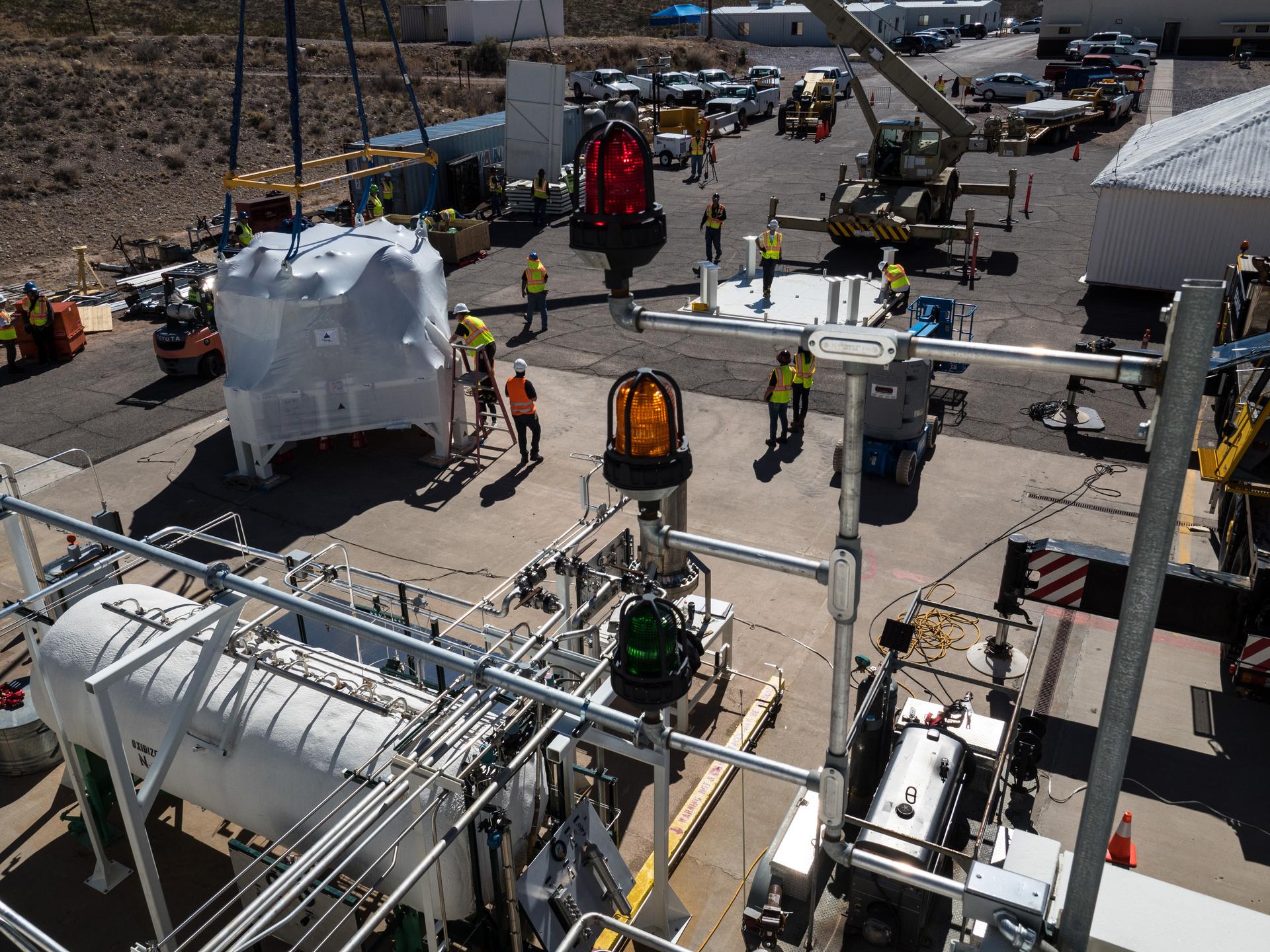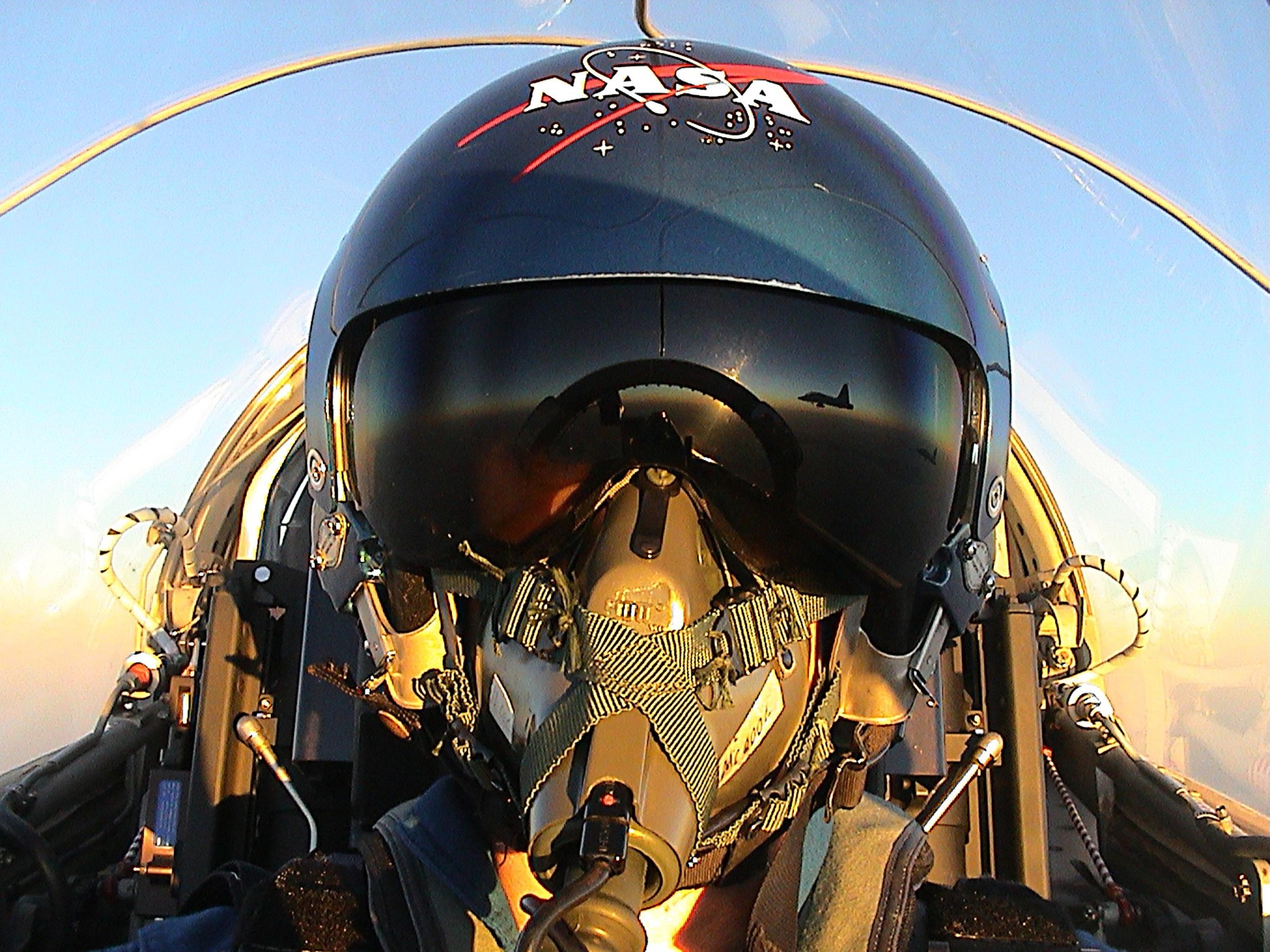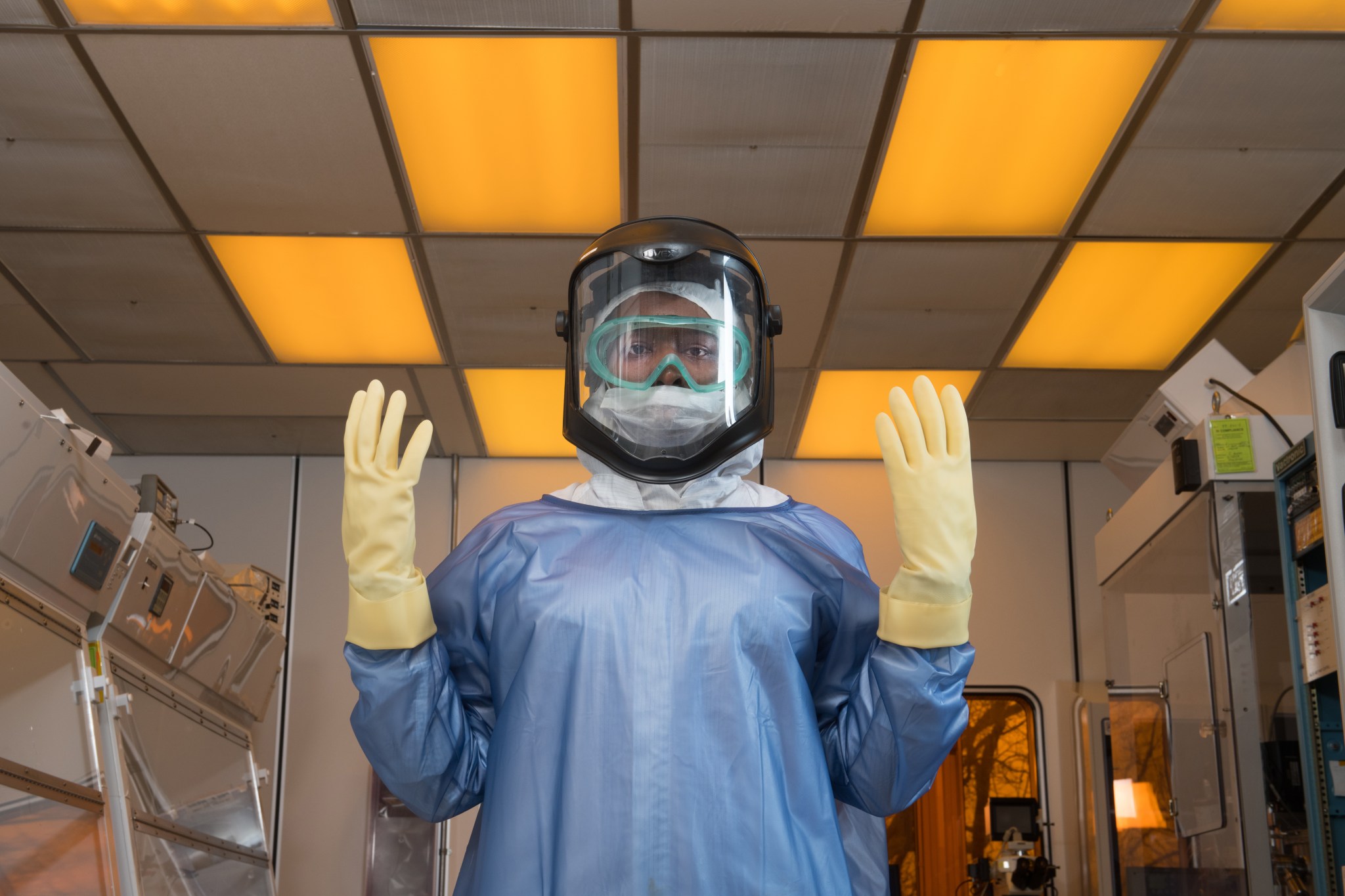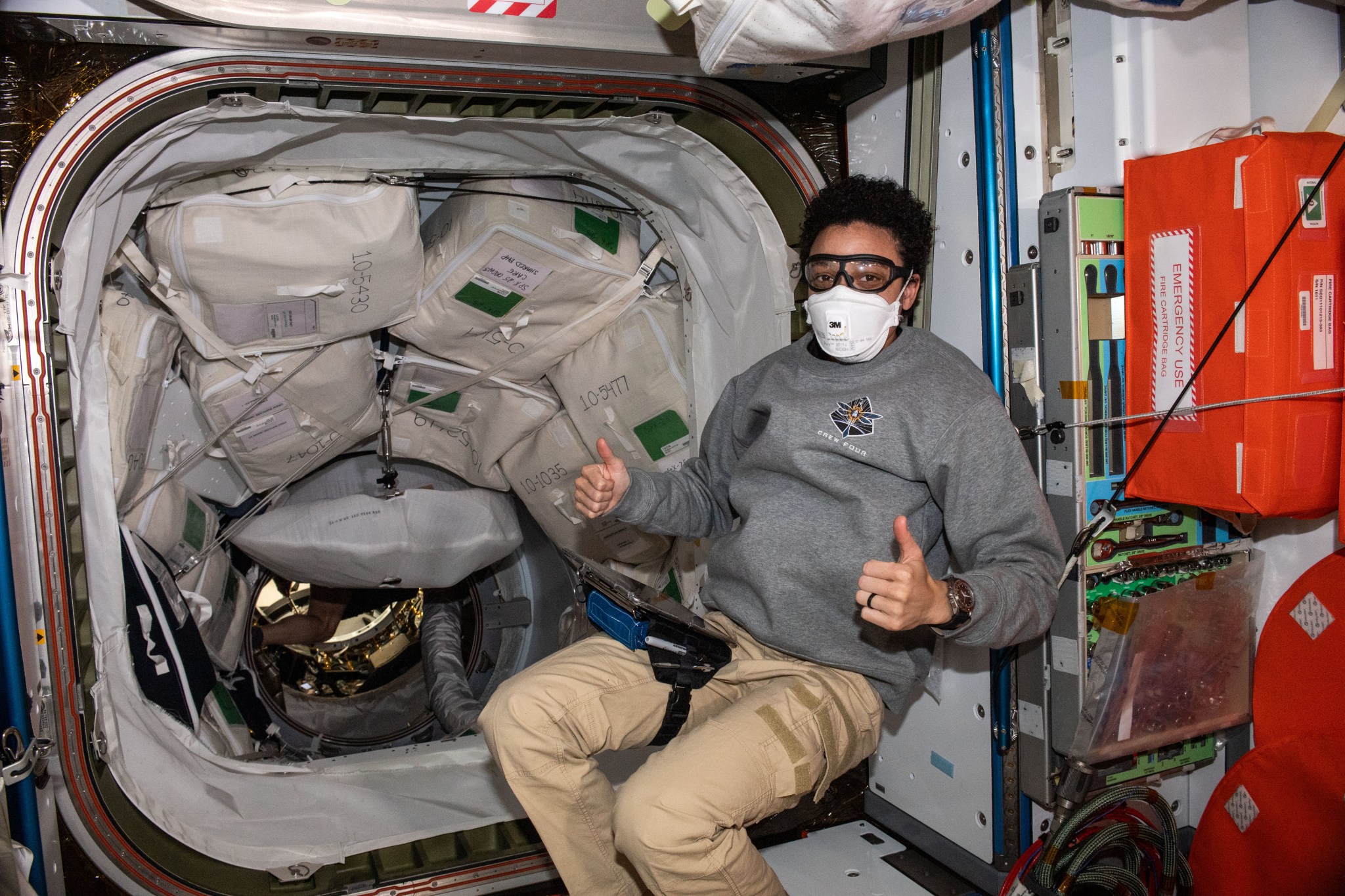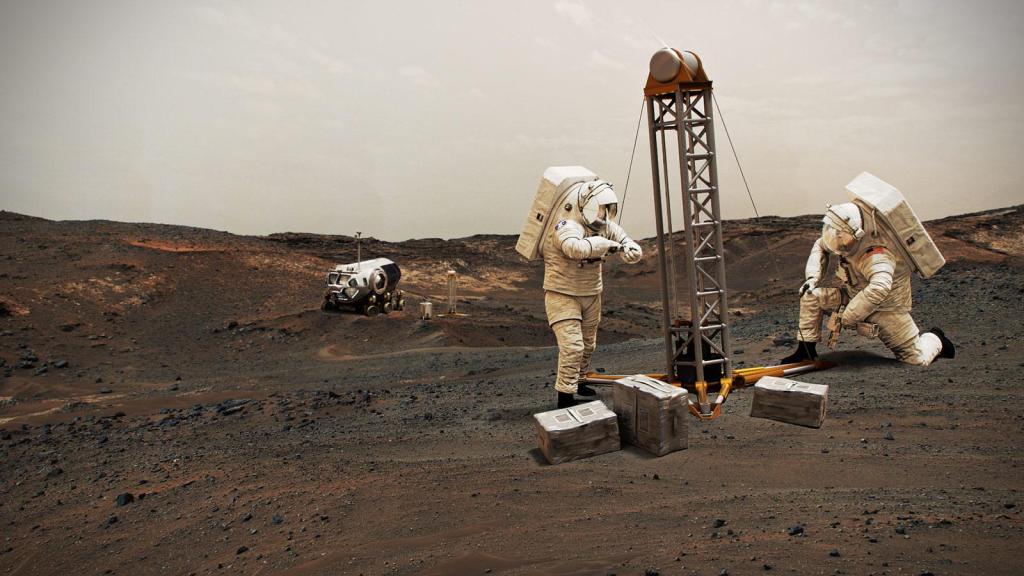Safety & Decision Support

Introduction
Safety and decision support are critical for human spaceflight to mitigate risks, ensure the well-being of astronauts, and facilitate informed decision-making, ultimately safeguarding the success and integrity of human missions. NASA Johnson Space Center (JSC) experts develop and administer flight and ground safety programs, focusing on protecting personnel, equipment, spacecraft and missions. Experts in safety and mission assurance conduct mishap and close call investigations, employ risk management strategies, perform risk management, assess hazards and failure modes, and provide reliability and quality assurance processes and assessments. We invite our partners to leverage our extensive safety and mission assurance expertise, ensuring the success and reliability of collaborative endeavors in human space exploration.
Safety Process and Analysis
Probabilistic Risk Assessment
Overview | Probabilistic Risk Assessment (PRA) identifies and quantifies risks in business, engineering, operations, and manufacturing systems. Our team provides the customer with the analysis and recommendations to make informed decisions to help mitigate risks that lead to loss of life, physical assets, or production time.
Details | We use proven Probabilistic Risk Assessment (PRA) tools and techniques along with extensive libraries of historical operations and failure data to quantitatively derive the probability of undesirable events.
- Requirements Development
- Design Analysis
- Requirements Verification
- For New Developments – the ideal time to conduct a PRA is at the beginning of the design process to incorporate the necessary safety and risk avoidance measures throughout the development phase
- For Existing Systems – PRA can be applied to existing systems to identify and prioritize risks associated with operations. Risk assessments can evaluate the impact of system changes and help avoid compromises in quality or reliability while increasing productivity.
- For Incident Response - In the event of unexpected downtime or an accident, our team can assess the cause of the failure and develop appropriate mitigation plans to minimize the probability of comparable events in the future.
Failure Mode and Effects Analysis (FMEA)/Critical Items List (CIL) Analysis
Overview | Safety and Mission Assurance offers consultation with application, implementation, evaluation, and disposition of Failure Mode and Effects Analysis/Critical Items List (FMEA/CIL) activities.
Details | NASA Safety & Mission Assurance (S&MA) conducts Failure Mode and Effects Analysis/Critical Items List Analysis (MEA/CIL) for space stations, crew vehicles, habitats, and EVA programs. These analyses can include repair and maintenance activities as well.
Certification of Flight Readiness (CoFR) Process
Overview | The Certification of Flight Readiness (CoFR) process includes a formal process of safety risk review and communication to decision makers.
Details | NASA JSC can provide training for the process of flight readiness for vehicles: risk assessments, vehicle anomalies, flight information, and safety watch items. A key component of training is communicating risk information to decision makers.
Integrated Hazard Assessment
Overview | NASA JSC Safety and Mission Assurance (S&MA) Organization offers expertise in generating and processing Integrated Hazard Analyses (IHA) and hazard reports in support of the human spaceflight programs.
Details | NASA JSC Safety and Mission Assurance (S&MA) Organization offers expertise in generating and processing Integrated Hazard Analyses (IHA) and hazard reports in support of the human spaceflight programs. S&MA currently provides resources to conduct of Gateway IHA activities.
Safety Review Panel Process
Overview | Safety and Mission Assurance (S&MA) offers expertise in application, implementation, evaluation, and facilitation of safety review processes.
Details | Utilization of NASA S&MA resources impacts current efforts in the conduct of NASA safety activities for the ISS, Crew visiting vehicles with ISS, Gateway program milestones, and Extravehicular Activity & Human Surface Mobility Program (EHP) safety programs.
Hazard Analysis for Payload and Systems
Overview | Safety and Mission Assurance (S&MA) offers consultation within the application, implementation, evaluation, and facilitating collaborating with projects and programs in the development of hazard analyses for hardware, payloads, systems, and visiting vehicles.
Details | Utilization of these resources impacts current NASA S&MA efforts in the conduct of current NASA safety activities for space stations, crew vehicles, habitats, and EVA programs.
Hazard Report Development and Requirement Non-Compliance
Overview | Safety and Mission Assurance (S&MA) offers consultation within application, implementation, evaluation, and facilitating collaborating with projects and programs in the development and approval for hardware, payloads, systems, and visiting vehicles hazard reports and noncompliance risk paper that is approved by ISS Program leadership.
Details | Utilization of these resources impacts current NASA S&MA efforts in the conduct of current NASA safety activities for space stations, crew vehicles, habitats, and EVA safety programs.
Note: The development will be “on a special case-by-case basis” in response to specific requests with the assurance that developers will not be the checkers and approvers of those relevant hazard reports.
System Safety
Overview | Safety and Mission Assurance (S&MA) offers safety and risk evaluation and communication and expertise in evaluating safety risks from all spacecraft systems.
Details |
- Electrical, EEE parts, propulsion, structural, communication, computer-based control systems (both hardware architecture and software safety), environmental systems (temperature, humidity, air quality), pyrotechnics
- Provide system safety support for all milestone reviews associated with spacecraft and hardware certification
- Provide training in integrating safety into major and minor projects
Requirements and Verification Development and Closure
Overview | Safety and Mission Assurance assists in developing, writing, tailoring, and integrating requirements and verifications, especially related to safety.
Details |
- Expertise in writing, tailoring, and integrating vehicle requirements affecting and affected by safety concerns
- Expertise in developing verification statements and agreements to match the requirements
- Expertise in evaluating safety reports and design reports to confirm requirement has been met as stated in the verification statement
Reliability & Maintainability
Overview | Safety and Mission Assurance assures implementation of Reliability & Maintainability (R&M) programmatic and technical requirements, verification methods for all R&M design requirements, and evaluation of preventive maintenance & limited life items.
Details |
- Perform R&M analyses of data
- Identify R&M related risk to eliminate, mitigate, or acceptance of risks
- Provide review to assure implementation of requirements for program review and approval
- Manage R&M Programmatic and Design Requirements & the verifications method for these requirements, evaluates technical accuracy of Limited Life Items (LLI) and preventive maintenance (PM)
- Evaluates waiver/deviation requests for critical items and flight readiness
System Safety and Testing
Battery Systems Test, Design, and Analysis
Overview | The development, engineering evaluation, acceptance, and flight qualification testing of dedicated high-spec batteries as needed for spaceflight is available.
Details |
- Capability to test a variety of battery Cell Chemistries (Alkaline, Li-on, NiMh, Pb-Acid)
- Battery Performance Testing and abuse testing including on-limit conditions and off-nominal failed or damaged conditions
- Battery thermal runaway propagation
Automated Power Quality Testing
Overview | Automated power quality testing provides tests of automated power systems for unmanned and manned programs.
Details |
- Rapid Regression Testing to quickly identify impacts of configuration changes to flight power systems
- Rapid Test Development using preexisting test configurations developed by subject matter experts
Counterfeit Parts Detection – Electronics and Electrical Component Testing and Analysis
Overview | The Receiving, Inspection and Test Facility (RITF) team of engineers and technicians have years of experience and capabilities to support the full range of test article preparation and testing to both validate the integrity of parts before they enter NASA’s supply chain, and to determine the cause of failure, including counterfeit parts.
Details | Counterfeit parts are marketed with the intent to deceive the customer into purchasing substandard parts while believing they have purchased high-quality parts from reputable manufacturers. This intent to deceive defines a counterfeit part which likely has defects that are unknown to the manufacturer or the distributor. Counterfeiters continue to improve their techniques, making it more difficult to detect counterfeit parts. These parts can cause system failures when they fail to function in the environment in which they are to be used, etc. Methods used to detect these parts include X-Ray Fluorescence Spectroscopy, Destructive Physical Analysis, Optical Emission Spectroscopy, Real-Time Radiography, and Scanning Electron Microscopy.
Evaluation of Computer-Based Control System Control of Catastrophic and Critical Hazards
Overview | Working groups are available to assist developers building a system utilizing computer control of hazards. A logical methodology has been developed to assist in designing, testing, and verifying the system will perform as expected with acceptable risks for hardware and operators. Expertise is available with software development utilizing best practices for software development using a total life cycle approach.
Details | Computer-Based Control Systems (CBCS) use computer hardware and software as an integral part of the System Safety Process. CBCS safety is the application of engineering and management principles, criteria, and techniques to provide hardware failure and software error tolerance to minimize risks associated with the use of computers to control hazards.
Mechanical Component and Material Validation
Overview | NASA JSC Receiving, Inspection and Test Facility (RITF) team of engineers and technicians have years of experience and capabilities to support the full range of testing methods to military and commercial specifications.
Details | Mechanical components are used throughout industry as key structural and functional components. It is critical that these components meet the appropriate specifications. The function of mechanical parts in extreme conditions is dependent on the correct chemistry and condition of the material, as well as quality manufacturing processes. Experts provide verification that the mechanical component meets applicable specifications of American Society for Testing and Materials, such as, ASTM F 606/F 606 M; NASM 1312-8; ASTM A370; and ASTM E8. Methods used include Fractography, Scanning Electron Microscopy, Real-Time Radiography, Microhardness and Hardness Testing, Tensile Testing, Optical Emission Spectroscopy, Double Shear, Bend Test, and X-ray Fluorescence Spectroscopy.
Composite Overwrapped Pressure Vessels
Overview | White Sands Test Facility (WSTF) tests and evaluates composite overwrap pressure vessels (COPVs) and components through studying damage tolerance and stress rupture. It also offers leading expertise in both destructive and nondestructive evaluation, training, analysis, and development of life extension protocols for composite structures.
Details | White Sands Test Facility (WSTF) offers leading expertise in the testing, nondestructive evaluation, training, and analysis of composite structures. WSTF engages in the test and evaluation of structures by performing mechanical damage tests, sustained load testing, material compatibility, and hydraulic and pneumatic burst tests to understand and evaluate environmental effects on pressurized systems.
Damage Detection Course
A two-day damage detection course is offered to qualify aerospace visual inspectors of flight composite pressure vessels and provides comprehensive working knowledge of composite overwrap pressure vessel (COPV) technology. The course focuses specifically on mechanical damage, safe life, sustained load, and propellant/fuel exposure effects on pressure vessels built using graphite/epoxy composite filament wound onto metallic liners.
Safety Offices
Flight Operations Safety Office
Overview | NASA JSC Flight Operations Directorate (FOD) Safety Office provides safety expertise and experience to all phases of mission operations.
Details |
- Assesses and integrates safety issues, processes, policies, and controls across FOD and the International Space Station (ISS) , the Commercial Crew Program (CCP), and Artemis/Orion Programs
- Safety Review Panel (SRP) membership (FOD representative)
- Approves Operational Control Agreement Documents (OCADs) which define operational controls for system hazards
- Verifies all new OCADs are documented in flight rules, procedures, or training
- Pre-flight and real-time safety assessments
Aviation Safety Office (ASOFF)
Overview | The Aviation Safety Office (ASOFF) develops and administers the flight and ground safety programs.
Details | ASOFF focus is to protect personnel, protect aircraft and equipment, and accomplish the mission by enhancing the safety culture.
- Develops and administers the flight and ground safety programs for all aviation operations
- Manages the Aircraft Operations Safety Management System for JSC manned and unmanned aviation assets
- Manages and performs Mishap, Close Call, and Hazard investigations at Aircraft Operations Division (AOD)
- Performs Risk Management of all aviation engineering designs/integrations and crewed flight operations
- Performs NASA Human Factors Analysis and Classifications (NASAHFACS) of all anomalies at AOD
- Serves as the JSC focal point for aviation safety
White Sands Test Facility Environmental Office
Overview | White Sands Test Facility (WSTF) Environmental Office personnel have unique expertise within the agency to ensure compliance with applicable environmental regulations. The Environmental Office can also assist other facilities in environmental impact assessments, restoration, air quality monitoring, petroleum product storage requirements, wastewater management, and water quality.
Details | Our vast experience in water quality/sampling, air quality, waste management and oil/gasoline storage help not only our co-tenant facilities but are also available for consultation or coordination with the following areas.
Air Quality
NASA monitors and tracks air-emission activities to ensure our operations are compliant with current regulations, including the Environmental Protection Agency and New Mexico Environmental Department regulations.
Oil Storage
Petroleum products stored on site are regulated by numerous environmental regulations including state and federal requirements for above ground and below ground tanks and for the development of plans that address how these products will be contained in the event of a spill or release.
Waste and Wastewater Management
Hazardous wastes, wastewater, and solid wastes are generated during testing and evaluation activities. These wastes are managed in accordance with state and federal laws to ensure the safety of our workers, protection of the environment, and to identify any waste minimization opportunities.
Water Quality
Groundwater is crucial since it provides all the on-site drinking water. Routine sampling of our drinking water supply system is conducted to ensure compliance with both state and federal safe drinking water regulations.
Assessment and Restoration
WSTF performs a variety of environmental investigations to determine the impact of historic releases of chemical wastes on our environment and recent activities.
- Soil and groundwater investigations
- Soil gas and groundwater monitoring well installations Soil, soil gas, and groundwater monitoring Seismic surveys Hydrogeologic interpretation field work Remediation system design and operation, and Remediation technology evaluation
Additional Capabilities
Workmanship Training
Overview | The NASA Level B Receiving Inspection and Test Facility (RITF) Workmanship Training Center provides Agency-wide NASA Workmanship Standards compliance training.
Details | It is critical that technicians and inspectors are trained in and maintain their proficiency in implementing applicable industry standards during the design, development, fabrication, testing, evaluation, and inspection of space flight hardware. Training services include “hands-on” training to engineers, technicians, and inspectors in the areas of electrostatic Discharge (ESD), soldering, cable harness assembly, crimping, conformal coating, and fiber-optic terminations. Courses are taught to both NASA and Industry standards.
Real-time safety support
Overview | Safety and Mission Assurance offers safety operations support for real time, complex space station and vehicle operations.
Details | Provide training in setting up real time operations consoles
- Proved specific safety-related real time support, Safety Assessments, Chits, and Anomaly Reports
White Sands Test Facility Calibration Team
Overview | The White Sands Test Facility (WSTF) Calibration Team supports all test programs on-site and helps to safeguard the lives and equipment used in high-risk endeavors. Calibration ensures that the data received from calibrated instruments is converted into meaningful and accurate measurements traceable as part of the unbroken chain of calibrations through the National Institute of Standards and Technology (NIST), or an institution recognized by NIST through international agreements, or to the International System of Units (SI) when such units have been established using local standards and calibration systems.
Details |
The WSTF Calibration Services
- Force: 0 to 50,000 lb.
- Pressure: 0.05 to 40,000 psi
- Vacuum: Atmospheric to 10-7 torr
- Torque: 3 oz-in. to 2100 lb.-ft
- Flow; Gas: 0.0008 to 200 scfm, Liquid: 0.4 to 400 gpm
- Temperature: 197 to +500 ° C Humidity: 20 to 90%
- Length: 0.01 to 36 in Mass: 1 μg to 30 kg
- Voltage, DC: 100 μV to 10 kV
- Voltage, AC: 0.1 to 1000 V at 5 to 50,000 Hz
- Resistance: 10 mΩ to 1GΩ
- Current, DC: 0 to 100 A
- Current, AC: 0 to 20 A at 10 to 5000 Hz
- Frequency: 0.01 Hz to 26.5 GHz
- Phase Modulation: 200 to 20,000 Hz at up to 26.5 GHz
- Power: +30 to -120 dBm up to 26.5 GHz
- Noise Figure: 0 to 30 dB up to 18 GHz
- Automatic Network Analysis: 0.045 Hz to 18 GHz
- Microwave Attenuation: 0 to 120 dB
- Vibration: 0 Hz to 20 kHz; Resonant search to 40 kHz


























